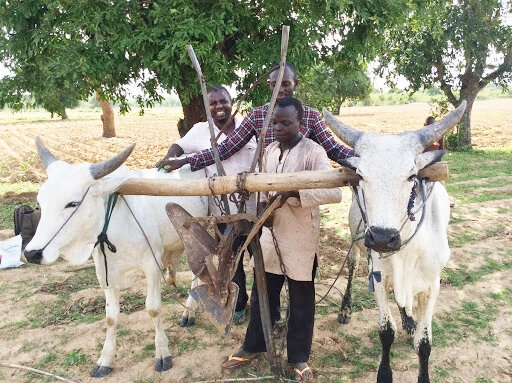By Chinedu Anarado
By 2030, the United Nations (UN), and its agency, the Food and Agriculture Organization (FAO) hope to have achieved Sustainable Development Goal 2—end extreme hunger in the world. As of 2017, an estimated 821 million people globally are facing extreme hunger. The bulk of this group lives in Sub-Saharan Africa, where 237 million people were undernourished. In Northeast Nigeria alone, 2019 saw an estimated 2.6 million people left severely food insecure due to the insurgency and conflict1.
Climate change, poor farming practices and the nonexistence of sustainable partnerships and support systems all contribute to the growing cases of low crop yield. Most farmers do not have access to the right kind of information, and where they have information, they lack sustainable support to implement them.
During the planting stage
Recognizing this, the UN identifies the need for governments and private actors around the world to ramp up investment through enhanced international partnerships, research and extension services, and technology. This will increase agricultural productivity in developing countries, thus strengthening nutrition and food security systems.
Here is how eHealth Africa leveraged partnerships and existing structures to drive the introduction and adoption of the Farm Management Tool (FMT) among 25 farmers in Kano State.
FMT started as Cornbot, a mobile application built in partnership with Dr. Cornelius Adewale, the Bullitt Environmental Dellow at Washington State University. The application was built to aid farmers to identify, detect, manage and control Fall Armyworm (FAW), a major pest of maize and 85 other plant species. It was an entry for the 2018 FAW Tech Prize jointly sponsored by Feed the Future, the United States Agency for International Development (USAID) and the Centre for Agriculture and Biosciences International (CABI). These platforms continue to provide financial support, expert knowledge, and interventions to local farmers around the world.
Upon winning the Frontier Innovation Award, eHA and WSU utilized the prize money to build FMT. The project was implemented in a three-pathway approach consisting of a mobile application and a web-based dashboard to aggregate data, face to face training sessions and practical hand-holding sessions. To recruit the farmers, eHA and WSU partnered with the Kano State chapter of the National Agriculture Extension and Research Services (NAERLS) to hold a pre-implementation workshop for 40 smallholder farmers. The workshop gleaned useful information that helped the project team to understand the farmers’ current agricultural practices, challenges, and level of knowledge.
A local farmer watches a video about bio-pesticide production using Neem leaves
After the workshop, 25 farmers were selected to participate in the study. They each earmarked 25 square meters of test farmland to test the efficacy of incorporating four Good Agricultural Practices (GAPs) put forward by FAO, on crop yield. eHA partnered with Gwarmai Consulting, a local consultancy company to provide handholding support to the farmers, from pre-planting to harvest. The farmers learned soil testing, pest scouting, weeding, plant spacing, fertilizer application, and ash application for soils with high alkaline content.
Farmers at the Pre-Implementation Workshop
The results were impressive. In comparison to the Kano State average Maize yield of 2,750 kg/hectare, test farms recorded a 116% increase. Test farms also had a 195% increase compared with the national average of 2,020 kg/hectare.
In addition, the farmers acknowledged the value of the new information and committed to imbibe them and share with other farmers within their networks. It is often said that information is power. However, the information will never produce the desired effect without platforms and networks to get it across to those who need it. The success of the Farm Management Tool is an example of how Nigeria can reverse food insecurity if the right partnerships and platforms are leveraged to get much-needed information and skills across to local farmers.



